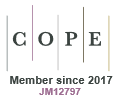Just Accepted
This article has been peer reviewed and accepted for publication. It is in production and has not been edited, so may differ from the final published form.
A novel methodology to assess fuel treatment efficacy: Application to California's forests
Abstract
Background: Fuel treatments are increasingly used to mitigate wildfire risks; Aims: Proposing a novel, scalable, and transferable methodology, this study investigates which treatment is (more) effective at a regional scale; Methods: This research evaluates the effectiveness of fuel treatments in California forests using the Fuel Treatment Effectiveness Monitoring (FTEM) database, which provides a binary (yes/no) assessment of treatment efficacy based on a structured subjective evaluation process. Proposed methodology enables scaling up site-specific treatment outcomes to the regional level; Key results: 61% of treatment footprints that were intersected by a wildfire were effective at modifying fire behavior. Treatments that included wildland fire and/or fuel removal were more effective in modifying fire behavior (>70%) than those dominated by fuel rearrangement (49%-54%). Even treatments with lower overall efficacy successfully modified fire behavior when applied at large scales. Fuel treatment effectiveness outcomes were robust under extreme weather conditions; Conclusions: Fuel treatments are an effective wildfire mitigation tool, even under a warming climate with intensified fire weather. The proposed methodology can be used to assess fuel treatment effectiveness in US regions that do not have California’s extensive case studies; Implications: The choice of treatment options needs to be carefully considered as their effectiveness widely varies.
WF24220 Accepted 19 June 2025
© CSIRO 2025



